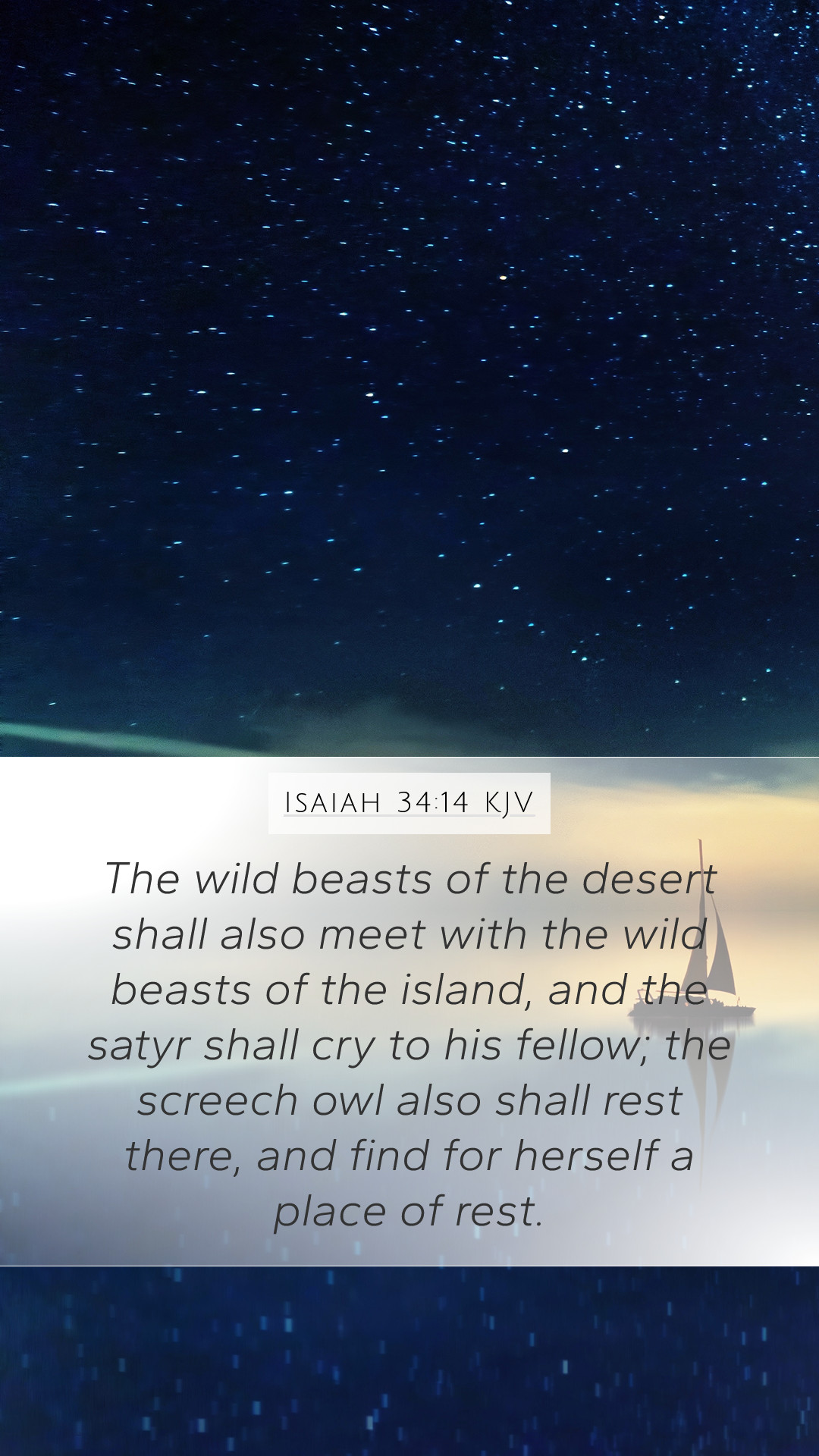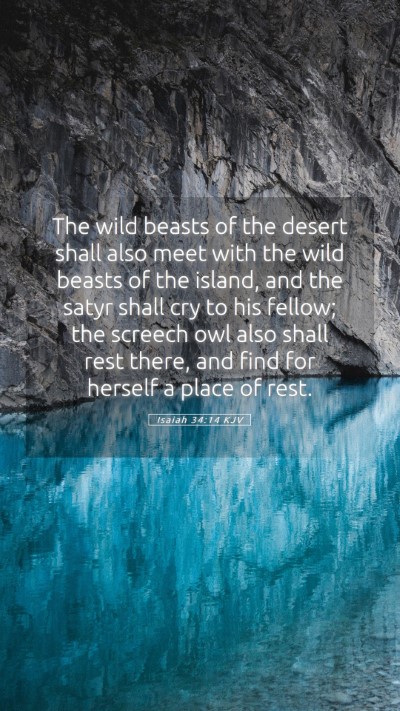Understanding Isaiah 34:14
Bible Verse: Isaiah 34:14 - "And the wild beasts of the desert shall also meet with the wild beasts of the island, and the satyr shall cry to his fellow; the screech owl also shall rest there, and find for herself a place of rest."
Summary of Meaning
The verse Isaiah 34:14 presents a vivid imagery of desolation and meeting places of wild creatures in a cursed land. The context of the chapter is a prophecy concerning the judgment of nations that have turned against God. In this verse, the contrast of wild beasts illustrates the abandonment of once-thriving cities, now left to roam by creatures that symbolize chaos and destruction.
Commentary Insights
Matthew Henry’s Commentary
Matthew Henry emphasizes the prophetic nature of this verse. He interprets the beasts as representing the desolation that comes upon a land forsaken by God. The imagery of animals meeting in desolation reflects the complete ruin of what was once a populated and flourishing society. It serves as a warning about the consequences of sin and rebellion against God.
Albert Barnes’ Commentary
Albert Barnes elaborates on the symbolism of the creatures mentioned in the verse. He suggests that the wild beasts of the desert and islands symbolize those who thrive in desolate conditions, indicating a harsh reality where humanity has failed. This reflects a broader theme of judgment where unclean spirits or forces communicate and coexist in a place devoid of divine presence.
Adam Clarke’s Commentary
Adam Clarke provides a more literal interpretation of the creatures as being emblematic of the nations that shall be left desolate. He highlights the significance of the "screech owl," also referred to as the "owl," which is often associated with barrenness and desolation, reinforcing the theme of abandonment and emptiness resulting from divine judgment.
Symbolism and Imagery
The verse imbues rich symbolism, where each creature represents aspects of forsakenness and the stark absence of human civilization. The satyr, a mythological reference to a goat-like creature, symbolizes unrefined nature and chaos, echoing the disarray in a land once under divine blessing:
- Wild Beasts: Symbolizing lawlessness and desolation.
- Desert and Island: Locations that are inhospitable and barren.
- Screech Owl: A creature often associated with night and solitude, emphasizing the abandonment of the land.
Historical and Literary Context
This verse is set within a broader prophetic framework in the book of Isaiah, addressing both immediate historical realities and eschatological elements. Isaiah 34 forecasts the ultimate downfall of nations that oppose God. Understanding the historical context of Israel’s struggles against foreign nations enhances the interpretation of desolation portrayed in this verse.
Application and Relevance
While Isaiah 34:14 talks about ancient nations, its applications can be derived for modern readers. The themes of abandonment, judgment, and consequence can resonate deeply for those examining their own lives or societies. It prompts reflection on the importance of following divine guidance and the implications of turning away from God.
Additional Cross References
- Isaiah 13:21-22: Highlights desolation and wild animals filling the land post-judgment.
- Jeremiah 50:39: Reflects on similar themes of desolation in judgment against Babylon.
- Zephaniah 2:13-15: Speaks of the judgment and resulting desolation of cities.
Conclusion
Isaiah 34:14 serves as a poignant reminder of the consequences of disobedience against God and a prophetic voice reflecting on a reality of chaos and disorder that can arise in its wake. The profound imagery calls for a deeper understanding of biblical themes of judgment, inviting readers to seek insights into their spiritual journey.


